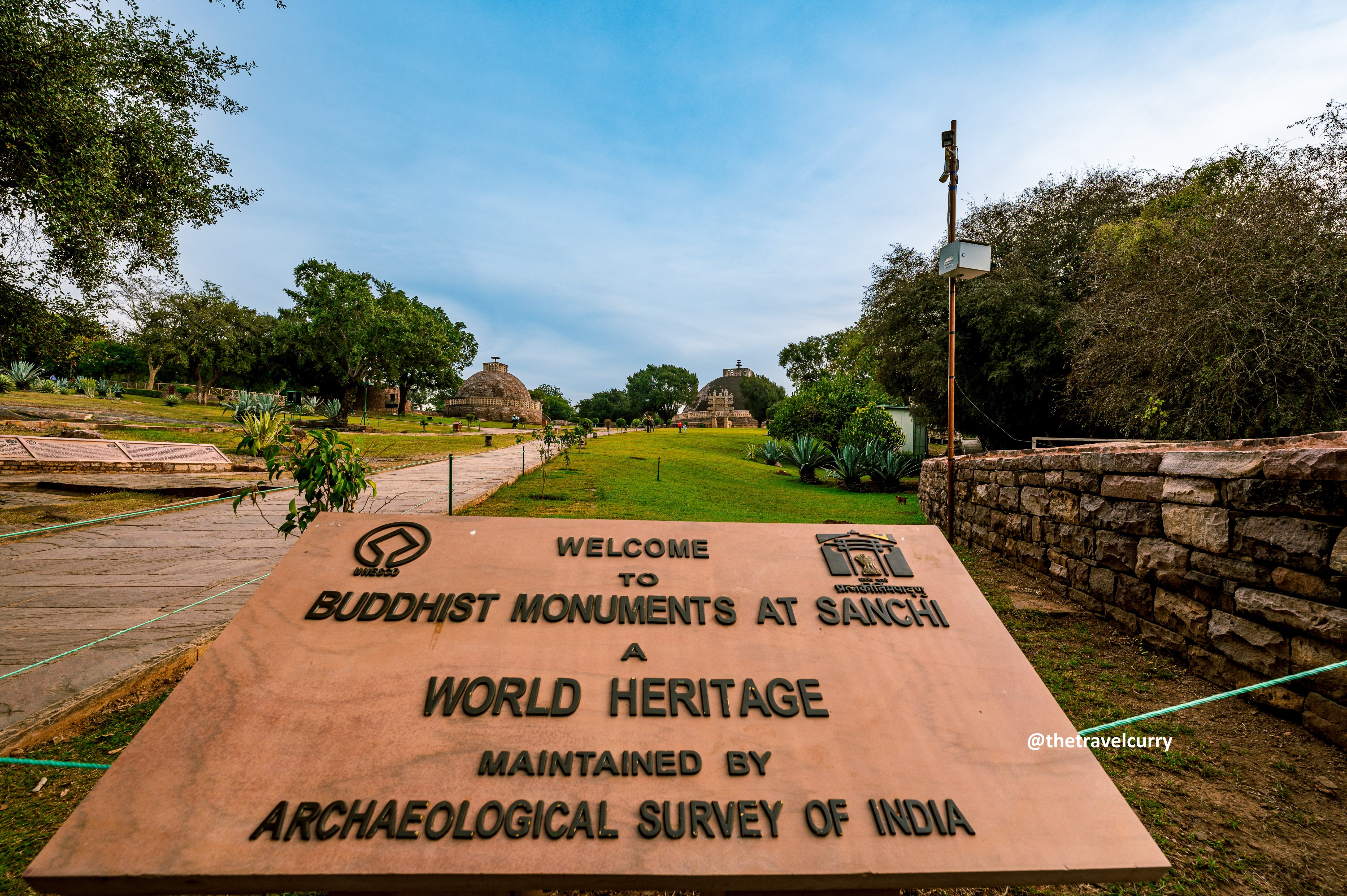
Shining in the heart of India, amidst the serene landscapes of Madhya Pradesh, is the magnificent Sanchi Stupa. A treasure trove of history and spirituality, this UNESCO World Heritage site dates back to the 3rd century BCE. It is a testament to India’s rich cultural heritage and Buddhist legacy. Planning a trip to Sanchi Stupa lets travelers delve into the depths of ancient architecture, spirituality, and history. Use this guide and hop on to a beautiful journey to Sanchi.
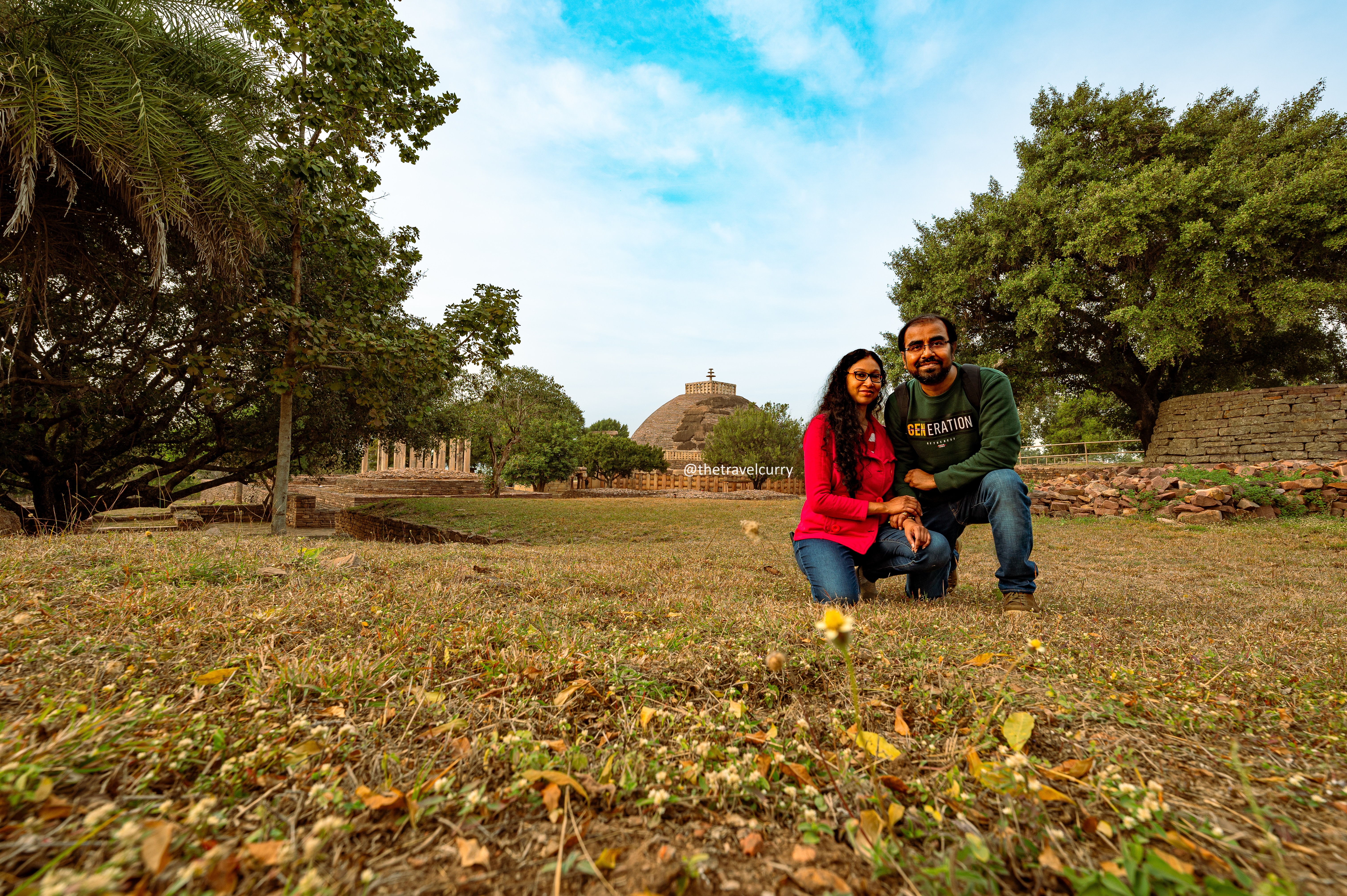
Going back in time
Sanchi Stupa, an ancient Buddhist monument was built by the Mauryan emperor Ashoka in the 3rd century BCE. Originally commissioned as a simple brick structure, it was later expanded and embellished during the reign of Ashoka’s successors. The site comprises several stupas, monasteries, temples, and pillars, making it one of the most important Buddhist sites in India.
What to see and experience at Sanchi
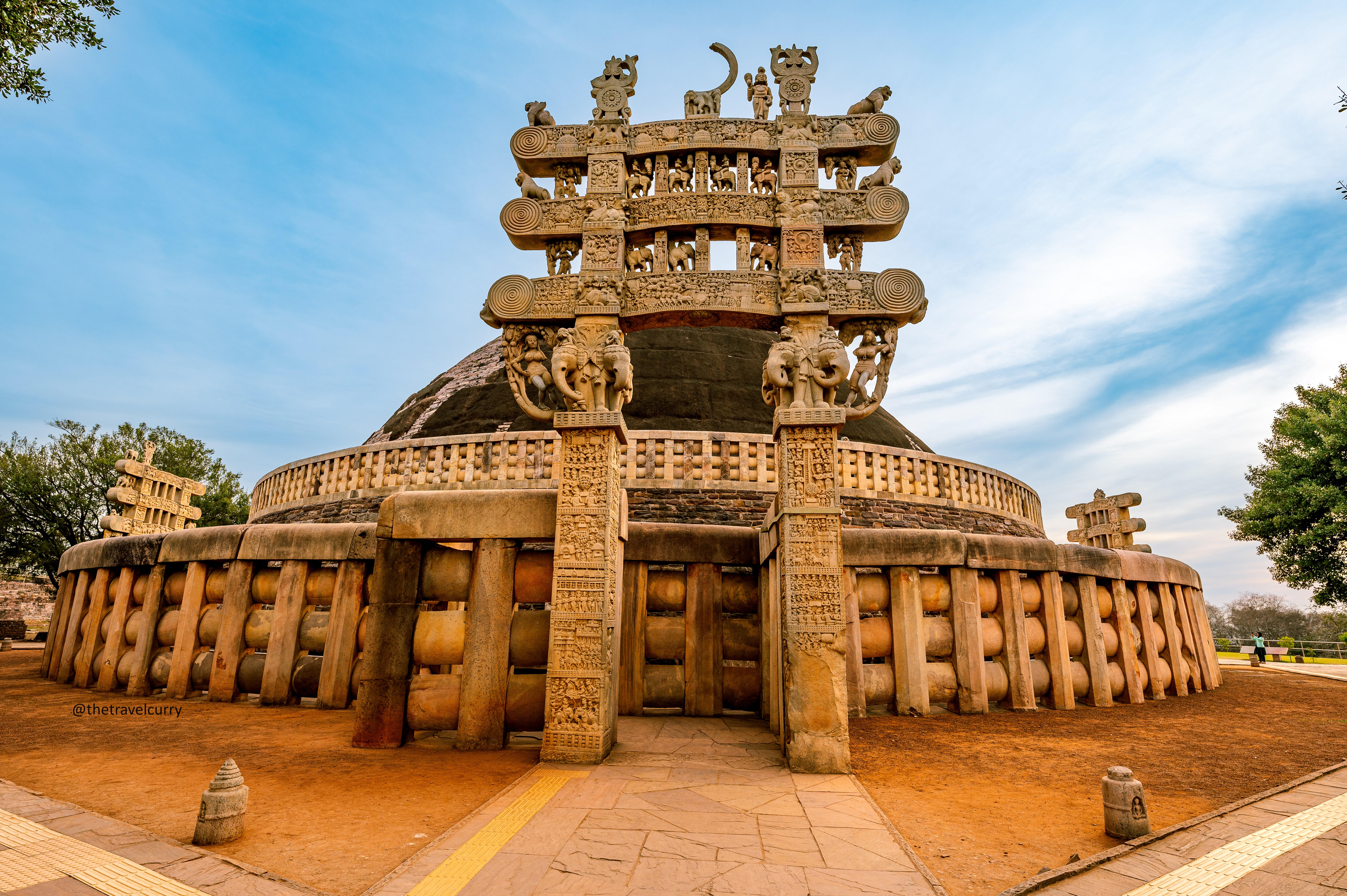
At Sanchi Stupa site, you will be greeted by the Great Stupa, the focal point of the site. It is also referred to as Stupa No. 1, with four elaborate gateways or torans on four sides. Standing at a height of 16.4 meters and adorned with intricate carvings and sculptures, it exudes grandeur. The elaborate stone railings that encircle the stupa reveal exquisite depictions of Buddhist teachings, scenes from the life of Buddha, and various mythical creatures.
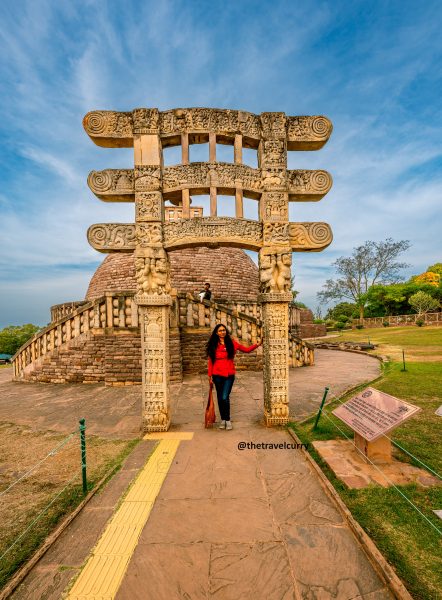
Apart from the Great Stupa, you can also explore the numerous smaller stupas, ruins of monasteries, Buddha statues, and temples scattered throughout the complex. Each of these offers a glimpse into ancient Buddhist art and architecture.
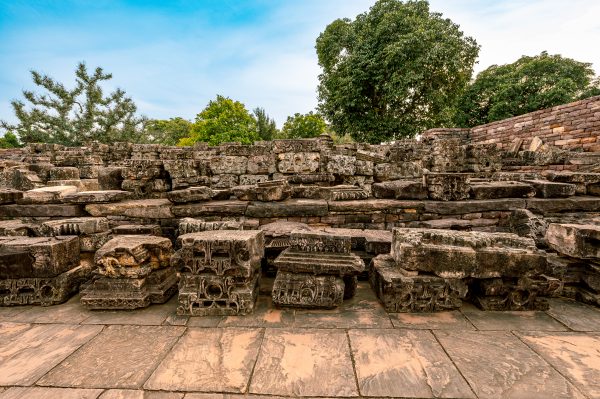
Additionally, the Archaeological Museum onsite houses a remarkable collection of artifacts unearthed from the site, including intricately carved pillars, statues, and relics dating back centuries. However, the museum is located at the foothill of the stupa and closes at 5 pm. So make sure you visit the museum before you reach the stupa.
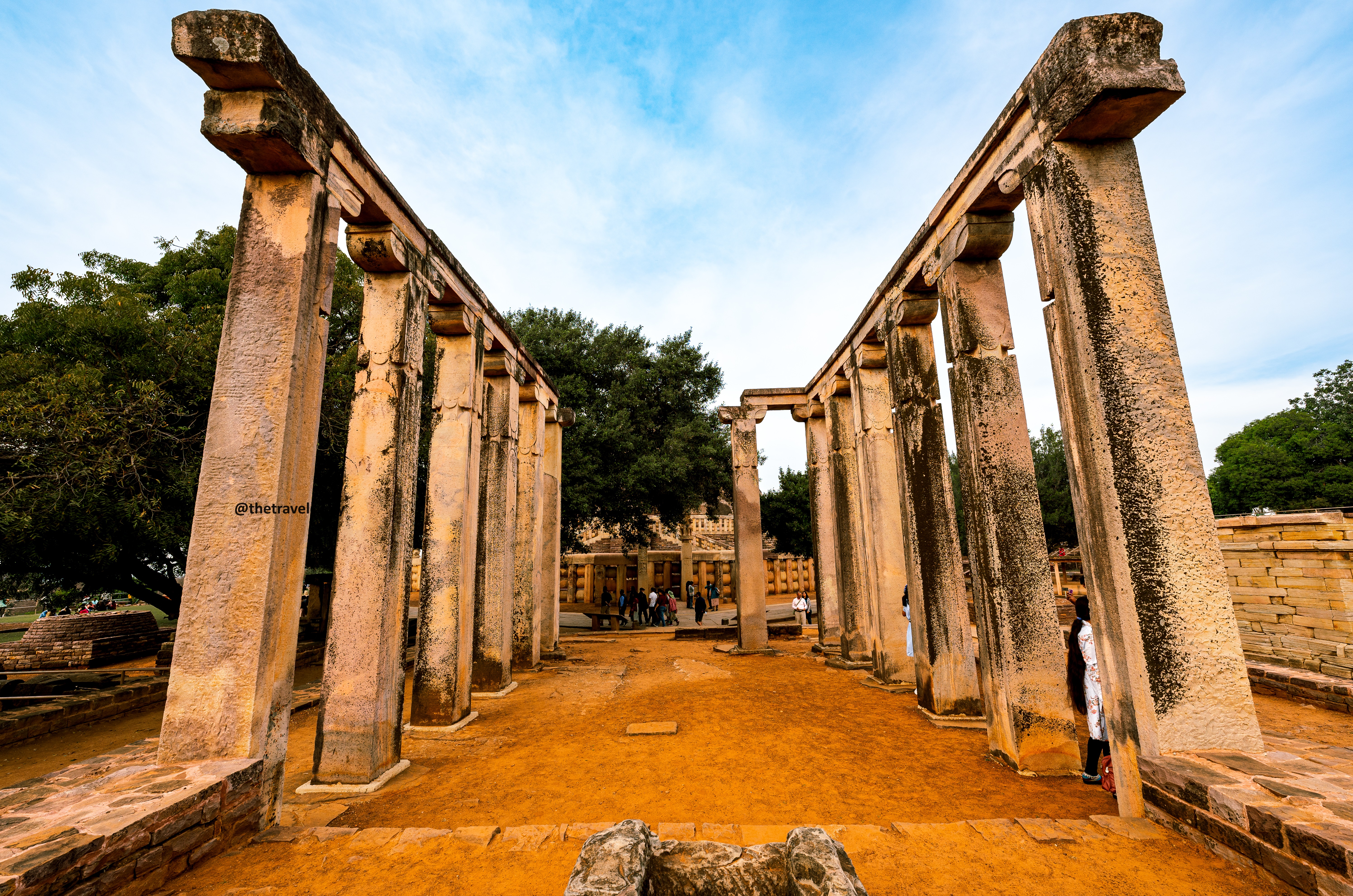
UNESCO World Heritage Site – Sanchi Stupa
Inscribed as a UNESCO World Heritage site in 1989, Sanchi Stupa holds immense cultural and historical significance. It stands as a remarkable example of Buddhist architecture and artistry. Stupas showcase the spread of Buddhism across the Indian subcontinent during ancient times. The meticulous preservation of the site ensures that future generations can continue to marvel at its beauty.
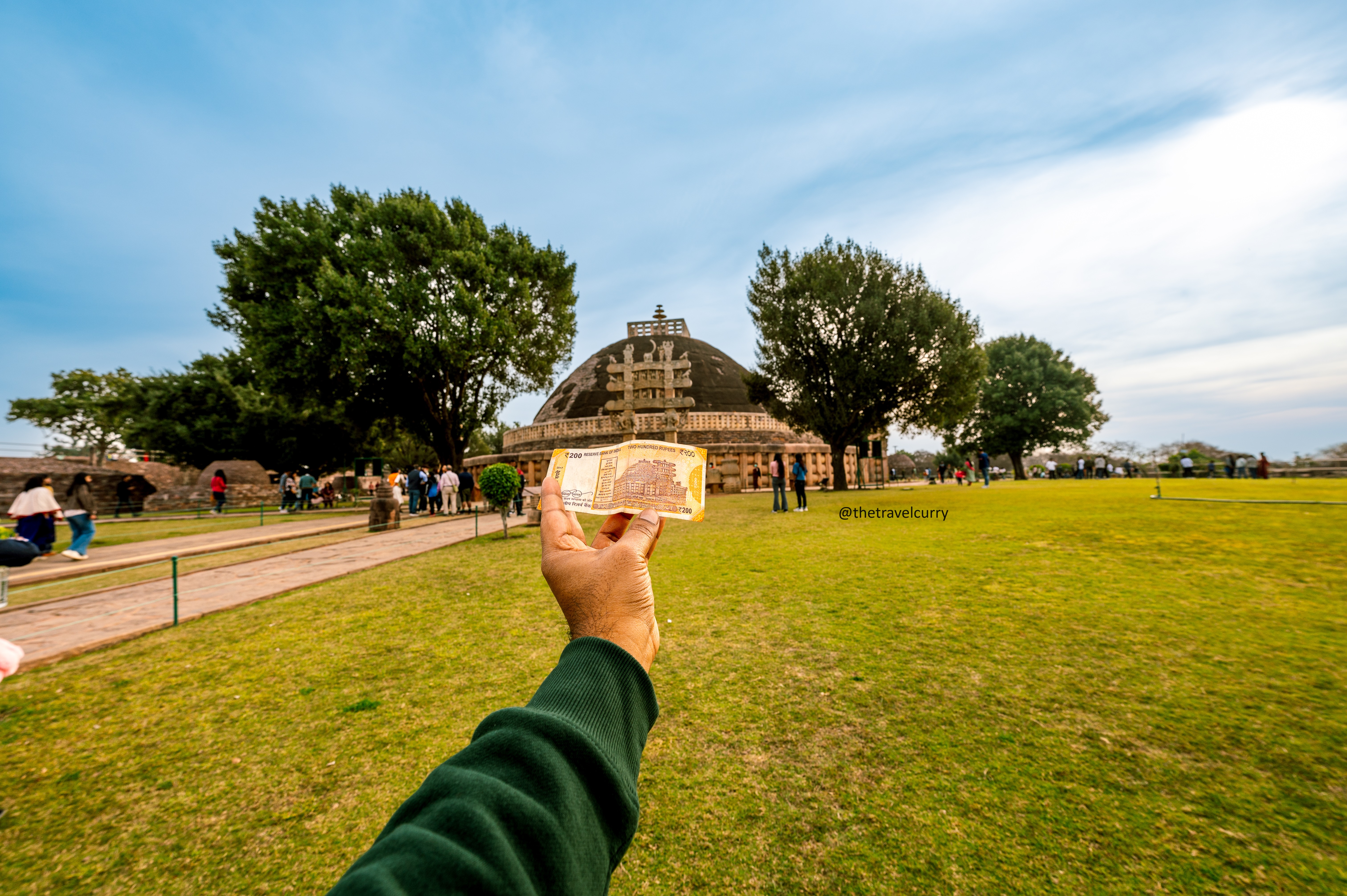
In 2017, Sanchi Stupa was printed on Rs 200 currency, depicting India’s cultural heritage.
Visiting Timings and Travel Tips for Sanchi Stupa
- The best time to explore Madhya Pradesh is between October and March when the temperatures are mild. We visited in January, and it was already mildly warm.
- The site of Sanchi Stupa is open to visitors from sunrise to sunset, allowing ample time to explore its wonders at leisure. The light and sound show starts at 7 pm.
- To make the most of your visit, consider hiring a local guide for insights into the site’s history and significance.
- It’s advisable to wear comfortable footwear and carry water and sun protection, especially during the hot summer months.
- Leave your shoulder bags or big-sized bags in vehicles. However, you can carry small purses or handbags onto the premises.
- You can carry water bottles, but eatables are strictly prohibited.
- Please respect the religious and cultural significance of Sanchi Stupa by observing appropriate behavior. Also, refrain from littering and avoid disturbing the peace of the surroundings.
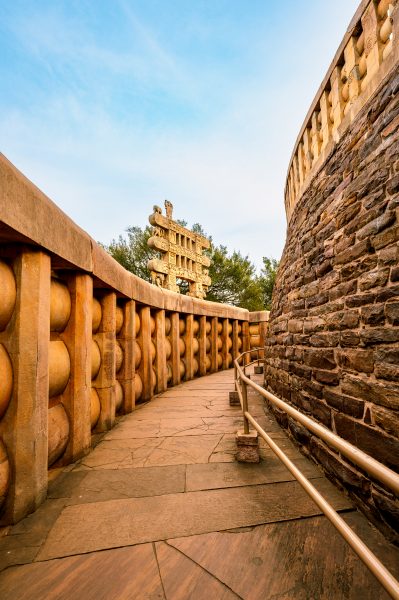
Getting to Sanchi
For travelers coming from Delhi, the road distance to Sanchi is roughly 750 kilometers. This distance takes approximately 12-13 hours by car via NH44. We hence broke the journey into two parts and stayed in Tonk, Rajasthan. Further from the town of Tonk, Sanchi is about 500 km away which we covered in 8 hours. Alternatively, the nearest airport is Raja Bhoj Airport in Bhopal, located around 55 kilometers away. Bhopal Junction and Vidisha are the nearest railway stations, with regular train services connecting it to Delhi and other prominent cities.
Places To Explore Near Sanchi
- Apart from the stupa site, you can explore Udayagiri rock-cut caves, around 9 km away. Hiking up to the summit while witnessing ancient statues and iconography was a refreshing experience for us.
- Experience the regal charm of Bhopal, the capital of Madhya Pradesh, which lies 47 km away. The city of lakes holds a lot of history in its heart that you’d love.
- Around 97 km from Sanchi, lies another UNESCO World Heritage site. The ancient cave paintings in Bhimbetka Caves, narrate stories of tribal heritage and lives of prehistoric ancestors.
- A 325 km drive will take you to the world heritage site of Khajuraho temples. It will take approximately 6-7 hours by road and a little over 5.30 hours by train from Sanchi. The nearest railway station from Sanchi is Vidisha and there are three trains running between Vidisha and Khajuraho.
Sanchi in a Nutshell
A visit to Sanchi Stupa is not just a journey through time but a soul-stirring experience. It leaves a lasting impression on every traveler. Moreover, from its majestic stupas to its tranquil surroundings, every aspect of this UNESCO World Heritage site invites exploration and contemplation. So, pack your bags, embark on this unforgettable voyage, and discover the timeless charm of Sanchi Stupa in the heart of India.

Thanks for sharing the useful travel tips for Sanchi. Loved the pictures and the info on surrounding places.
Thanks for taking out the time to read and your kind words. Happy to help 🙂